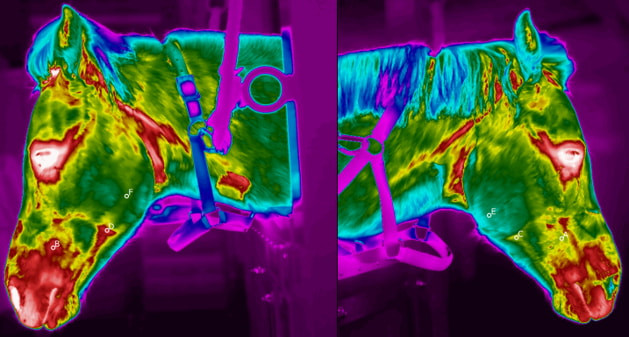Diagnostic thermal imaging quickly and reliably reveals possible issues and identifies where the focus of examinations and treatments should be.
Unlike anatomical imaging techniques, such as X-ray and MRI, thermal imaging is a physiological imaging technique. The method gives access to inspecting vascular, muscular, and nervous systems.
Safe and non-invasive diagnostic tool
Pleasant for the animal - not based on pain reaction identification
Immediate results in a visual form
Thermography reveals even the tiniest abnormalities. Early detection means quicker treatment, which in turn often translates into lower treatment costs and shorter recovery. Thermal imaging is a superb tool for early diagnostics, because it may enable the detection of possible problems even weeks before any clinical signs appear.
Thermal imaging provides a non-invasive and efficient way to detect and monitor various health conditions in animals. This early detection is invaluable in preventing the progression of diseases and improving treatment outcomes.
Jean Joaquim DVM, MSc, Phd., LAC IVAS. Esp.


Early detection of health issues
Identifying problem areas
Determining the size of the wound or injury
Evaluating treatment impact
Monitoring of healing
Quick screening of large herds

A pony stopped eating with no obvious cause. Three different veterinarians had tried to reach a diagnosis with conventional methods but were all unable to conclude what was wrong.
Keep reading »

A 4-year-old trotter with injured suspensory ligament (50%) in the right hind leg. Diagnostic thermal imaging is used to monitor treatment impact and the healing process.
Keep reading »
Thermidas IRT-384 Tablet is an astonishingly compact yet versatile thermal imaging system. Take it with you wherever you go and save the thermal images in the Thermidas cloud for further use.


Thermidas VET
Polttimonkatu 4
33210 Tampere, Finland